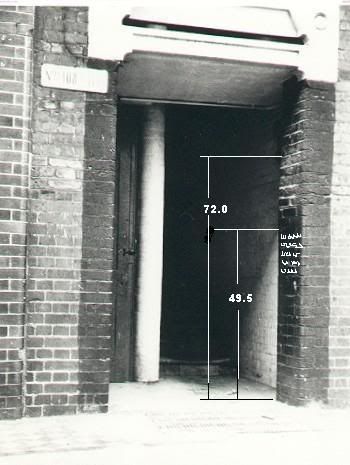Originally posted by Fleetwood Mac
View Post
Warren is the only one who states exactly where the writing was located:
"There were several police around the spot when I arrived, both Metropolitan and City. The writing was on the jamb of the open archway or doorway visible to anybody in the street and could not be covered up without danger of the covering being torn off at once....."
And the writing was very small according to Halse:
"...The size of the capital letters would be about 3/4 in, and the other letters were in proportion"
So no, not inside the building and the writing was not emblazoned across the wall, it was rather cramped and small.
Somewhere like this:

I think the dimensions were assumed from the standard size of a house brick.

 Morris Eagle, who would have had to step over Liz Strides body or interrupt a murder ongoing says when he entered the passageway, that he couldnt "be sure" the body wasnt there. Wess says the same thing, and he supposedly leaves before PC Smiths sighting of Liz.
Morris Eagle, who would have had to step over Liz Strides body or interrupt a murder ongoing says when he entered the passageway, that he couldnt "be sure" the body wasnt there. Wess says the same thing, and he supposedly leaves before PC Smiths sighting of Liz.
Comment